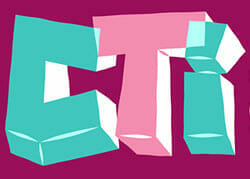CTI, or Computer Telephony Integration, is a general term used to describe technology that allows computers and telephones to communicate with each other. For example, if you call your bank and press 1 for balance information, it’s CTI interpreting the phone action and returning the database information. In the call center world, the technology is to make call handling more efficient. For example, CTI helps by popping caller information on the operators screen at the moment the call is connected – like the callers telephone number (ANI) or number dialed to reach the call center (SDNIS). Find out more about how CTI can turn your computer into a seriously powerful communications tool!
What is Computer Telephony Integration?
CTI is the exchange of commands and messages between computers and telephone equipment. The ultimate goal of CTI is efficient handling of incoming and outgoing telephone calls. CTI bridges the telecommunications and computer industries, and introduces new, integrated applications such as:
- Automated call management and routing
- Unified messaging
- Database interaction
- Videoconferencing
CTI can turn a desktop computer into a powerful communications tool that can combine sight, sound, text, animation, video and graphics. CTI helps improve customer service and employee productivity and will eventually evolve to be a building block in the overall IT and network architecture of enterprises across many industries.
Use in Contact Centers
First generation CTI applications focused on “screen pops”, bringing up Customer Relationship Management (CRM) data, based on the number from which the call originated. Second generation CTI applications focus on the following areas:
- Creating better ways to collect, store and interpret caller data
- Enriching interactions between Automatic Call Distribution (ACD) and Interactive Voice Response (IVR) systems
- Improving call routing
How it works
CTI involved a connection between a computer and a telephone switch. When a call center receives a call, it carries some form of identification – either ANI (automatic number identification) or CLID (calling line ID). The switch interprets this data and sends it to a computer that looks up the information in a database and provides instructions to the switch as to where the call should be routed.
Simultaneously, the customer’s database record is routed to the agent’s desktop. Routing can be either skills-based or productivity-based, and is done through an ACD system. There are two ways to enable CTI within a CRM environment – CTI Adapters and Open CTI
- CTI Adapters: A CTI Adapter is a middleware software that runs on the agent’s desktop and acts as an intermediary between the telephone equipment and the CRM software.
- Open CTI: Open CTI is a framework introduced by Salesforce.com. It allows companies to embed third party web apps directly into Salesforce.
CTI’s Practical Applications
- Screen Pops: The change in the computer display that occurs simultaneously with the arrival of a new call.
- Contact Management: Dialing directly from the contact record is possible, as are screen pops of the appropriate record based on incoming caller ID.
- Screen-Based Telephony: Also called softphone; the process of using the PC keyboard and mouse to answer, transfer, conference, and manage telephone calls.
- Auto Dialers: Electronic device or software that automatically dials telephone numbers
- Simultaneous Voice-Data (SVD): Sharing computer screens, Windows applications, and whiteboards while conducting a voice conversation.
- Interactive Voice Response (IVR): Gives callers specific information based on the unique details the callers enter (usually via touch-tone dialing)
Benefits of CTI for Contact Centers
The job of a CTI system is to improve the process of handling incoming and outgoing calls in terms of both speed and efficiency. The main benefits include:
- Productivity Enhancement: Less time gathering customer information reduces call time. Dialing, answering, transferring and placing calls on hold can all be managed on-screen for increased productivity.
- Better Customer Service: Agents can address callers by name and have all their details in front of them before the call is connected, thus increasing customer service levels.
- Cost Reduction: Integrating standalone hardware and software is an important element of achieving maximum benefit from CTI, and greater efficiency enhances cost-effectiveness.
As strong technologies evolve, the future of CTI in enterprise will continue to grow!
Copy the code below to use this infographic:
[html]
<img title=”What is CTI Infographic” alt=”What is CTI Infographic” src=https://www.specialtyansweringservice.net/wp-content/uploads/infographic-explaining-computer-telephony-integration-cti/what-is-computer-telephony-integration-infographic.jpg” width=”710″ />
<pre><em>Image originally posted on <a href=”https://www.specialtyansweringservice.net/infographic-explaining-computer-telephony-integration-cti/”>The SAS Blog</a></em>
[/html]
